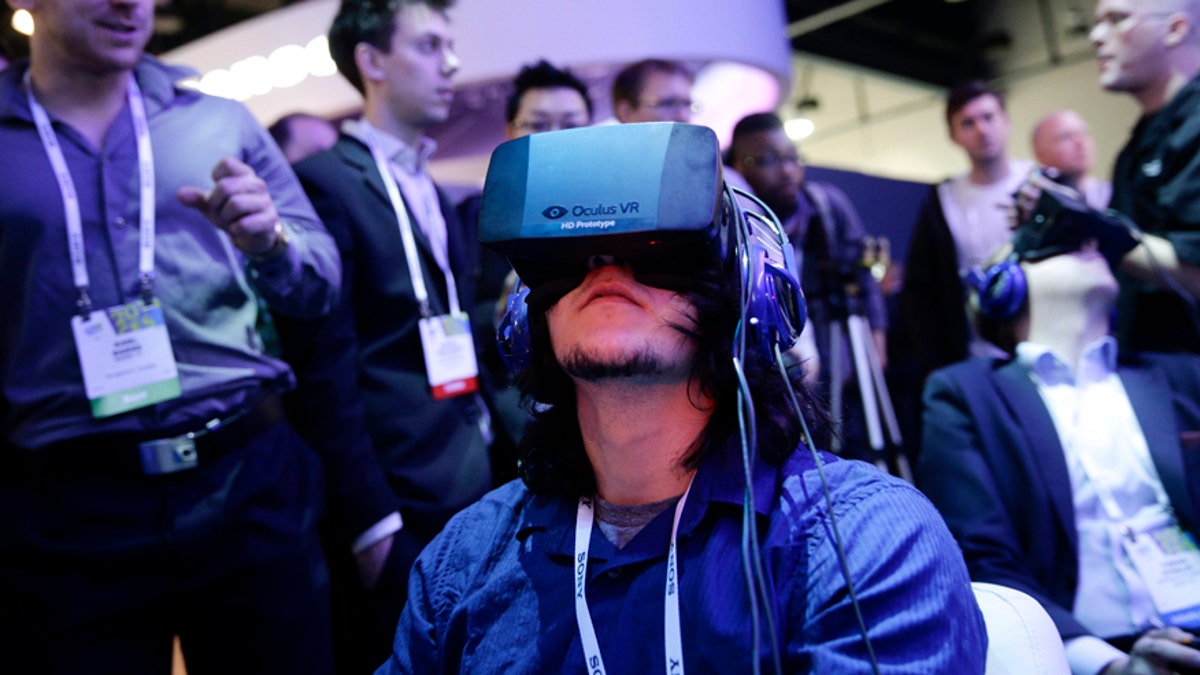
(AP)
It's either the stupidest decision or the most brilliant, insightful investment Facebook has ever made.
The social networking behemoth is acquiring virtual reality startup Oculus VR for a cool $2 billion. Oculus makes a virtual reality headset called the Oculus Rift, a bulky set of goggles that it has been demonstrating for some time but has yet to bring to market.
Unlike most of Facebook's other investments – such as its recent $16 billion purchase of WhatsApp – this is a recognition that software needs hardware, the foundation without which even the most creative software program can do nothing. And Oculus' hardware demonstrations have been impressive.
The Oculus Rift eliminates some of the blurry, head-spinning distortion of early VR headsets. True, it requires significant software, but it's the whole package that's important. As a system, it promises to overcome many of the constraints that have prevented VR technology from going mainstream. Oculus has been slow to get its product out the door, but it has promised to debut the Rift later this year. As an indication of possible pricing, development kits for programmers currently cost $350.
Facebook's hardware investment is also a Google-esque move. It acknowledges that simply buying more social networking and messaging companies is not going to sustain the company in the future. So, like Google, it's branching out (but don't expect to see an autonomous Facebook car driving down the street any time soon).
Conversely, Oculus Rift is nothing like Google Glass. The Rift is not a visual supplement; it is a total-attention-grabbing experience originally intended for gaming, but with many other possible uses. One might, for example, put on the headset and watch movies in a “personal” Imax theater. Or walk through a high-definition version of Second Life, chatting with other avatars. Or sit onstage with Arcade Fire during a live performance. Or experience everything but the actual physical exertion of climbing to the summit of Mount Kilimanjaro. In social settings, the Rift could turn a video chat into an experience of being in the same room with friends who are thousands of miles away.
But it's not all clear sailing for Oculus and Facebook.
First, the Rift is not the only VR headset in development. Many larger firms have their own headsets in research departments around the world, meaning there will be competing formats and no VR standard on the horizon. Sony, for example, has spent many years on VR technology, and if its system becomes dominant, Oculus could fade into the digital sunset.
The hardware still also requires software – or "content," in Silicon Valley speak. Games need to be written specifically to work with Rift, and other applications will require similar reworking. This will take time.
VR is also not for everyone. More than a decade ago, several companies abandoned their VR headsets because of a “cybersickness” effect. I spent a few too many hours testing one device on a game called Descent and felt some of its minor nausea-inducing effects. Oculus' technology is much improved, but spending extended time in a VR environment can be disorienting.
Finally, the 3-D effect of being somewhere that you really aren’t will require additional technology. Display technology is rapidly advancing, so practical, small 4K or Ultra HD headset screens that will create an immersive experience are on the way. But in order to create a "you are there" live form of video communication, much bigger data connections will be needed – far beyond the 15 Mbps connections currently enjoyed by many broadband users. How big a pipe will be needed is unclear, but it won't be delivered anytime soon.
In the meantime, Facebook friends will still appear as two-dimensional characters. And that may be a good thing – at least until we're ready to take our relationships to the next level.
